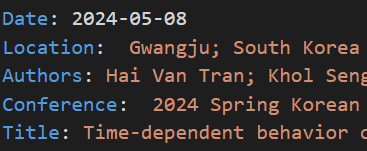Second blog
It has been a painfully steep learning curve in deploying website on GitHub using Jekyll.

Adapting to Jekyll
I am under the process of migrating my personal profile on github. I have researched into HTML but for a person like me who has no knowledge of hard-core programming, it gets very tricky to manage the site. Jekyll fulfills my needs as, with substantial effort, once I set it up, then things will be easier. Jekyll has very simplistic blog-like writing style and most of the processes are automated. Also, it is supported on github and has a very clean interface.
While I was migrating my website to Jekyll, the first problem I faced was populating my Publications page. I spent days in finding solution to the problem while trying to get hang of very unfamiliar terms like ruby, liquid and what-not with a weird syntax that looked like this {{%- scary -%}}. And working with this kind of code, it was difficult to implement automated citations from google scholar.
I tried Jekyll-Scholar and it worked somehow. However, it was a mess deploying the website on github. After a thorough research, I found that github does not allow any invasion of plugins. I could not find any way to keep it simple in a way that I keep my later effort to the minimum.
But there is a way; using _data tables which has the support for .csv files. So I started looking into a native solution where no matter how much messed up code is, but I do not have to face the nightmare of finding errors in deploying the website. I was able to make an ugly code which I works for me and can be demonstrated on publications page. I just have to bundle exec jekyll serve after updating the csv file with publications. Here is the procedure for building publications on the publications page
Dr. Jekyll and reDesign
First of all, I exported google scholar files as a .bib file and then converted to csv using bibtex-converter. The reason for doing it was that I could not differentiate between the publication types. So, I placed the refences.csv in the _data folder (probably I made the new folder). The order of items in the csv files are shown below:
Furthermore, I do not have any idea how to use two-worded variables in dot notation for displaying the values. I just added _ for every space between the words for making things temporarily working (I hope I find the solution).
First I called the references csv and sorted in descending order of the publish year.
Then from cards, I prepared separate headings to filter out journal articles only.
Further, I filtered the year for the journal articles (for example 2023) and applied minor html formatting until I was satisfied with the results.
The end resuls can be found here.
I also added Dr. Chang’s google scholar metrics. Probably, they have to be bundle exec jekyll serve (read bejs’ed) before deploying. Still a cool feature.
I will try to clean up the code for convenient workaround if I find time from my research.